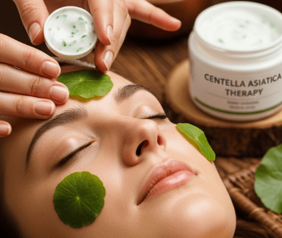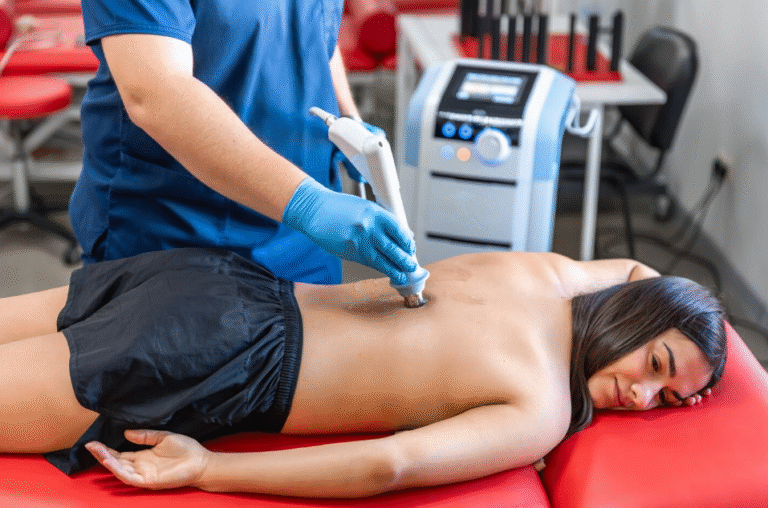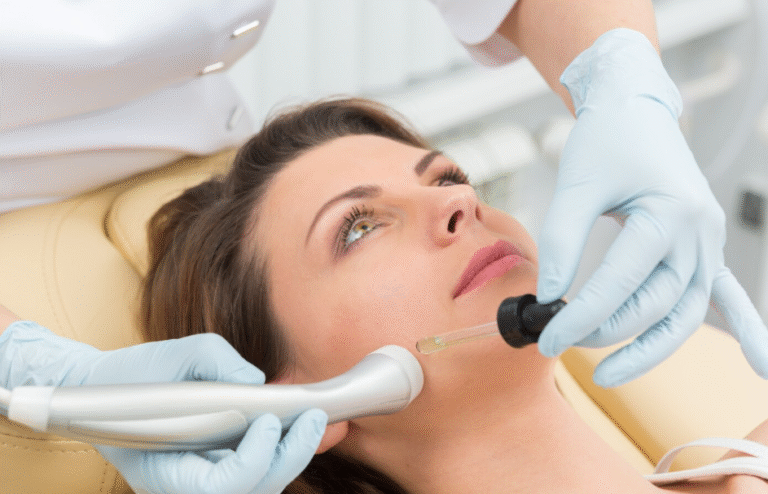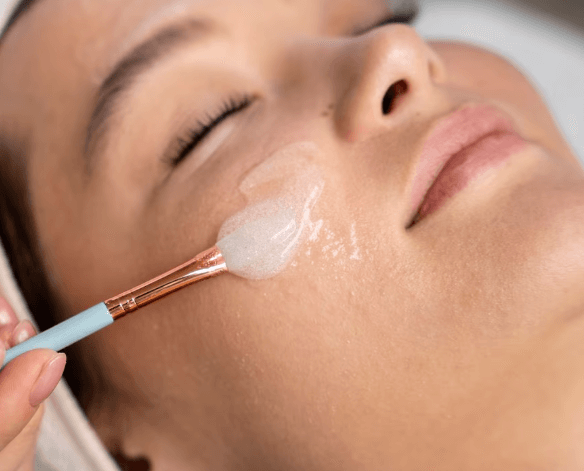Treatment Overview
Herbal Soothing Therapy is a popular integrative dermatology approach in Korea for managing redness, flushing, and sensitive vascular-prone skin. This therapy uses plant-derived extracts such as Centella asiatica, green tea polyphenols, licorice root, chamomile, mugwort (Artemisia), and propolis to calm skin inflammation, reduce vascular reactivity, and strengthen the barrier.
Unlike systemic drugs or lasers, herbal soothing therapies are non-invasive and gentle, making them suitable for patients with rosacea, post-acne erythema, or sensitive skin who cannot tolerate stronger interventions. In Korean clinics, these herbal therapies are often applied as infusion treatments, cooling packs, serums, or tonics after laser sessions or as part of redness management programs.
For redness and flushing, Herbal Soothing Therapy:
- Provides anti-inflammatory relief for sensitive skin.
- Reduces post-treatment redness and irritation.
- Strengthens barrier and supports vascular stability.
- Hydrates and nourishes skin with natural antioxidants.
Purpose & Benefits
- Anti-Inflammatory Effect: Reduces cytokine activity, calms redness.
- Antioxidant Support: Protects skin against oxidative stress that worsens vascular sensitivity.
- Barrier Strengthening: Herbal ingredients like Centella and propolis reinforce skin repair.
- Immediate Soothing: Rapid calming after lasers, peels, or environmental triggers.
- Holistic Care: Non-invasive, suitable for sensitive and rosacea-prone patients.
Ideal Candidates
Herbal Soothing Therapy in Korea is recommended for:
- Patients with rosacea-related redness and flushing.
- Individuals with post-acne erythema or sensitive skin syndromes.
- Adults undergoing lasers or peels who need calming aftercare.
- Patients who prefer natural, plant-based skin treatments.
- Those who require gentle, maintenance-focused redness control.
Comparison with Other Treatments
- Herbal Soothing Therapy: Gentle, natural calming; ideal for sensitive skin.
- Anti-Redness Lasers (PDL, V-Beam, Nd:YAG): Strongest effect for vascular redness.
- Antibiotics (Doxycycline, Minocycline): Systemic anti-inflammatory; long-term stability.
- Beta-Blockers (Propranolol, Carvedilol): Control adrenaline-driven flushing.
- Chemical Peels (Gentle Korean-style): Smooth post-acne redness, mild vascular effect.
- Erythema-Reducing Creams (Brimonidine, Centella-based): Daily topical redness relief.
- Cooling Masks: Short-term post-procedure soothing.
Possible Risks & Complications
Herbal Soothing Therapy is generally safe, but possible issues include:
- Rare allergic reactions to specific plant extracts (e.g., chamomile, propolis).
- Mild irritation if concentrated formulas are applied on very sensitive skin.
- Inconsistent results if used alone without combination care.
Treatment Techniques Used
- Herbal Infusions: Serums infused with Centella, green tea, or licorice root applied with microcurrent or iontophoresis.
- Soothing Packs: Herbal cooling gels or sheet masks placed after lasers/peels.
- Topical Serums & Creams: Daily use of herbal-based products for long-term barrier support.
- Clinic Integration: Herbal tonics and calming solutions paired with LED light or cryo-therapy.
- Frequency: Weekly to monthly in-clinic sessions, with at-home maintenance creams.
Recovery & Aftercare
- Immediately After Therapy: Redness reduced, skin feels cooler and calmer.
- 1–2 Days: Flushing sensitivity decreases; barrier feels stronger.
- Maintenance: Continued use stabilizes skin and reduces relapse frequency.
Aftercare Tips:
- Pair herbal therapy with daily SPF to protect against vascular flare-ups.
- Avoid combining with harsh actives (AHA, retinoids) unless approved by dermatologist.
- Store herbal masks/serums in a cool place for enhanced calming effect.
- Use fragrance-free cleansers and moisturizers to prevent sensitivity.
Results & Longevity
- Short-Term (Immediately–1 Day): Rapid calming and redness reduction.
- Medium-Term (2–4 Weeks): More resilient skin with fewer flushing episodes.
- Long-Term: Stable redness control when integrated into multi-step Korean skin programs.
Treatment Process in Korea
- Consultation & Diagnosis – Dermatologist identifies triggers (rosacea, post-acne, environmental).
- Selection of Herbs – Customized herbal solutions chosen (Centella, green tea, mugwort, etc.).
- Application – Herbal infusion or mask applied, often after laser or peel treatments.
- Clinic Add-Ons – LED light therapy, cooling masks, or serum infusion included.
- Follow-Up – Maintenance plan with at-home herbal creams or serums.
Why Korea is a Top Destination
- Extensive use of medical-grade herbal formulations alongside advanced dermatology.
- Clinics combine herbal therapy with lasers, cooling masks, and infusions for multi-step care.
- Affordable, natural alternative to systemic drugs.
- Korea is globally known for its herbal skincare innovation (Centella, mugwort, propolis).
- Emphasis on gentle, sensitive-skin protocols for redness-prone patients.
Cost Range (Detailed Breakdown)
Pricing for Herbal Soothing Therapy in Korea for redness & flushing:
- Single Herbal Soothing Session: USD 50 – 120.
- Package of 3–5 Sessions: USD 200 – 500.
- Consultation Fee: USD 20 – 40.
- Clinic Add-Ons (LED therapy, cooling masks, infusions): USD 50 – 150.
- Premium Herbal Redness Program (Herbal infusions + Lasers + Cooling therapy): USD 700 – 1,500 (3–5 sessions).
Additional Costs in Korea:
- Herbal calming creams/serums (Centella, mugwort, propolis): USD 30 – 90.
- Sensitive-skin sunscreens: USD 20 – 50.
💡 Patients often call Herbal Soothing Therapy the “natural calm cure”, since it restores balance with plant-based actives while being safe for long-term use.
Popular Clinics in Seoul
- Oracle Dermatology – Herbal infusion programs post-laser.
- Banobagi Dermatology – Customized redness packs with Centella and mugwort.
- Renewme Skin Clinic – Herbal tonics with LED therapy for rosacea.
- View Plastic & Dermatology – Herbal serums + cooling therapy for flushing.
- Chaum Anti-Aging Center – Premium herbal skin programs with regenerative infusions.




